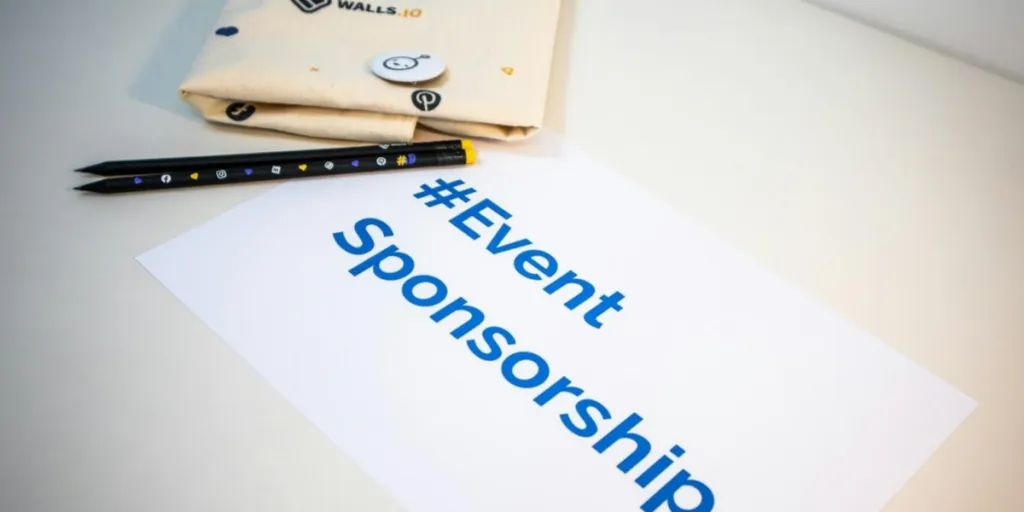Getting a sponsorship can be a game-changer for small businesses, especially when they want financial support for projects, events, or daily operations. However, securing one may feel overwhelming if retailers are new to the process. That’s why having the right approach can make a big difference.
So, don’t worry if you’re not sure how to go about getting sponsored. This guide will share four practical strategies from real-world success stories that will help you secure the right sponsorship to grow your business in 2025!
Table of Contents
What is a sponsorship?
The types of sponsorships
4 practical tips small businesses can follow to get a sponsor
Final thoughts
What is a sponsorship?
Sponsorships happen when big companies give money or resources to businesses or nonprofits. However, it’s not for free. In exchange, the company gets a promotion from the sponsored business. Usually, the goal is to reach the business or non-profit community.
Take a sports team in the United States selling its stadium naming rights, for example. When a company buys that naming right, it becomes a sponsor. Hence, it will place its name on the stadium and all related events. On the other hand, the sports team will receive massive funds.
However, things may be different for small businesses. They can get companies to sponsor their websites or social media contests if they are primarily online. Similarly, offline business buyers (like a local bar) can host a special event with a corporate sponsor. The goal is to find the perfect sponsor whose target audience matches the small business’s customers.
The types of sponsorships

Sponsorships come in three different forms, depending on what the business wants and what the company can offer.
| Sponsorship types | Description |
| Financial sponsorships | Corporate sponsors can fund small businesses for exposure, publicity, or other similar benefits. |
| In-kind or event sponsorships | Event sponsors can offer goods, expertise, and other products or services instead of funds. This type of sponsorship can be almost anything, from contest prizes to venues and food. |
| Media sponsorship | Sponsors may also give small businesses discounted or free advertising. It could also be similar to media exposure. |
4 practical tips small businesses can follow to get a sponsor
1. Start with a compelling offer: What can you give in exchange?

Since great sponsorships are not free, businesses must create offers that will catch the eye of potential sponsors. Think of it as a trade: What valuable things can the business provide in return for the company’s support? The good news is every small business probably has several assets that sponsors find appealing, including:
- Audience reach: Small business buyers with a solid social media following (including email and website) can use this as a significant selling point.
- Brand affiliation: Sponsors will likely close the deal if partnering with the brand will boost their image and appeal.
- Content creation: Small brands (especially those with a loyal audience) can offer to create sponsored content, such as blogs, videos, or podcasts. Sponsors love the targeted exposure.
- Event or product placement: Sponsors may agree to a deal if they want businesses to feature them in their products or events.
Let’s take the Foundr team, for example. They leveraged their community members by creating corporate sponsorship packages featuring magazine ads and podcasts. Then, they set attractive prices to make their offers stand out to sponsors.
Similarly, businesses should consider the unique benefits they can offer potential sponsors. They could offer exclusive opportunities, increased visibility, or an irresistible bundle. Then, consider what sets the offer apart from the competition and leverage it to make it too good to refuse.
Key takeaway: Businesses should define their assets and craft an offer that is clear, valuable, and competitively priced. Remember to make the offer in a way that speaks directly to potential sponsors’ needs.
2. Identify the right prospects: Who should businesses target?

Remember that sponsors also have their industries, so small businesses must find the right sponsors before forming a successful partnership. The first thing to do is target corporations that are already sponsoring similar businesses. These companies are more likely to see the value of what retailers offer.
Using the Foundr team as an example again, they used LinkedIn and other tools to group up to 200 potential sponsors. However, they focused on SaaS companies with the funds and the need to grow their customer base (especially those already investing in advertising). This targeted approach resulted in more efficient and effective outreach.
Likewise, businesses can apply this strategy to their sponsorship efforts. For instance, retailers in the tech industry should approach SaaS companies or tech hardware brands with advertising budgets. These companies always seek ways to connect and engage with many people.
Key takeaway: Create a list of potential sponsors already spending on sponsorships or advertising. Then, retailers should target those who align with their brand and audience.
3. Outreach strategy: How to make the first move

After gathering a list of potential sponsors, it’s time to contact the ones most likely to respond. Although this part can be tricky, a thoughtful approach can make a big difference. The secret here is for businesses to personalize their outreach.
Sponsors are likely to ignore generic emails or cold calls. However, a tailored message that addresses the sponsor’s specific needs and interests is more likely to grab their attention. Lastly, businesses can track their efforts and manage their outreach efficiently with CRM systems.
Remember to personalize each message by including the recipient’s name, company, and a brief explanation of why the offer is an excellent fit for them. For instance, a tech company can emphasize how sponsoring the business could boost the sponsor’s visibility among a tech-savvy audience.
Note: Even if businesses don’t have access to advanced CRM tools, they can use a well-organized spreadsheet to track outreach and responses.
4. Closing the deal: Turning interest into sponsorships

By now, businesses should have caught the interest of a sponsor. What they should do next is seal the sponsorship deal. Typically, this means having a deeper conversation through in-person meetings or video calls.
However, it’s not just about presenting more details about the offer. Small businesses must see their sponsors as partners, not as hard sells. They should listen to what the sponsor wants and adjust to meet those needs if necessary.
Let’s say sponsors are more focused on boosting brand awareness. Businesses can highlight the visibility they will get from their audience. But what if sponsors want to generate more leads? Then, retailers should emphasize how their engaged audience is ready to convert.
Final thoughts
Getting a great sponsorship takes a thoughtful approach that blends attractive offers, targeted outreach, and intelligent deal closing. The secret to success lies in creating mutual value—in other words, both parties must benefit.
When reaching out to potential sponsors, remember to present a clear offer, show genuine interest in their needs, and have a solid plan to turn that interest into a partnership. With these strategies, small businesses will be well-equipped to land the lucrative sponsorship deals they need for success.




